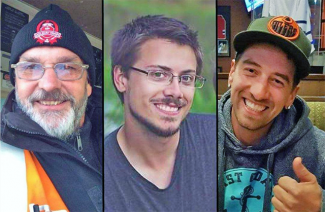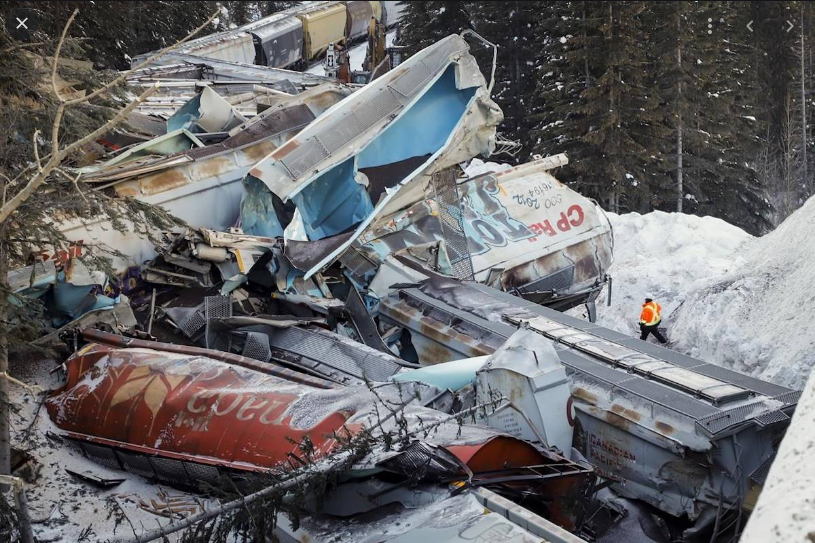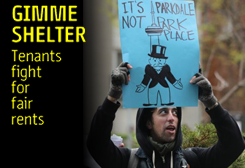BACK ON TRACK
Whistleblower courage leads RCMP to investigate train worker deaths

Engineer Andrew Dockrell (left), conductor Dylan Paradis (centre), trainee Daniel Waldenberger-Bulmer (right) were killed in the derailment
DON CRAWFORD DID HIS JOB AND GOT PUNISHED. His job was to investigate the cause of a CP Rail train derailment that killed three train crew workers. His conclusion was the police needed to be brought in. That’s the last thing his bosses at the Transportation Safety Board (TSB) or CP Rail wanted.
Crawford was the lead TSB investigator into the deadly derailment in the mountains of B.C. He says he came to suspect major safety failures by CP had led to the runaway crash of Train 301 on Feb. 4, 2019, that killed three crew members: Dylan Paradis, Andrew Dockrell and Daniel Waldenberger-Bulmer.

Aftermath of the wreck of 99 cars and two engines of runaway CP Train 301 near Field, B.C., on Feb. 4, 2019
Defies bosses
Based on his findings, he went to his bosses in late 2019 to ask them to call in the RCMP to investigate. They refused. Crawford went public.
He told CBC News in early 2020: “There is enough to suspect there’s negligence here and it needs to be investigated by the proper authority.”
CP lawyers immediately began phoning and emailing the TSB, and by the next morning, had sent an official warning of potential legal action, according to internal documents obtained by CBC News.
The TSB responded by immediately removing Crawford from the case, issuing a statement distancing itself from its own investigator, and then privately apologizing to the railway.
CP gets an apology
The TSB chair, Kathy Fox, apologized to a CP official in an email that read: “I’m very sorry for the furor caused by statements from our (former) lead investigator on the Field investigation file. This is not how we conduct our business,” Fox wrote.
CP didn’t sue the safety watchdog or the CBC.
“It seems like they were bullied and intimidated by CP,” said author Bruce Campbell, who wrote extensively about the TSB in his book about the Lac-Mégantic rail disaster.
“They came down like a ton of bricks,” he said. “It once again reveals how broken the system is and how it needs to be restructured.”
The case has prompted more calls for whistleblower protection for TSB investigators and stronger powers for Canada’s lead agency responsible for probing all major safety disasters on rail, in the air and at sea.
Families seek answers, justice
The TSB says its role prohibits it from calling in police. To do so, it says, could be prejudicial or be seen as implying criminal wrongdoing, which is outside its mandate. The families of the three dead workers aren’t buying it.
They believe the TSB is failing to fully investigate the crash and that it caved to pressure from industry.
“CP Rail told the TSB to jump. Instead of simply asking, ‘How high?’ the TSB did three somersaults and apologized for not doing them fast enough,” said lawyer Tavengwa Runyowa, who is representing two of the families in a negligence lawsuit against CP.
The families are also petitioning Parliament to make it clear TSB should call in police if it suspects negligence, and to ensure stronger whistleblower protection for TSB investigators.
“That CP Rail could brazenly threaten a regulator to prevent a criminal probe into three deaths at CP Rail is stunning,” said Runyowa. “It shows that CP Rail believes it is untouchable.”
He said there’s nothing in TSB’s mandate that prohibits the agency from picking up the phone to contact police.
In December, following a series of CBC News stories and a complaint filed by Pam Fraser, whose son, Dylan Paradis, was killed in the crash, the RCMP launched a major crimes investigation into the derailment and CP’s actions that followed.
That police probe is ongoing.
The TSB’s safety findings in the crash are expected to be released later this year.
- 30 -













Add new comment